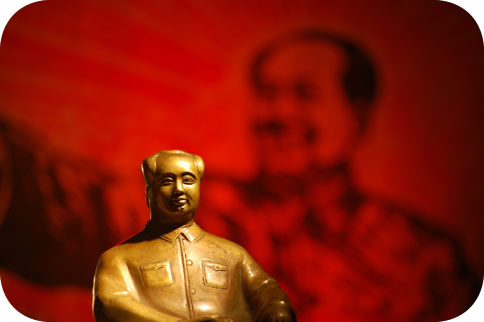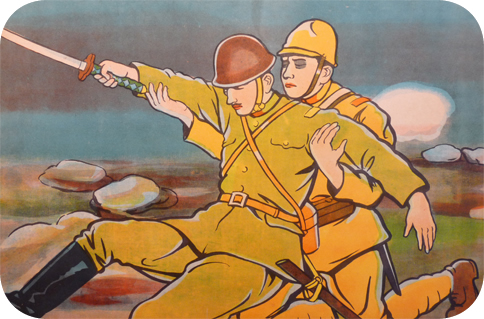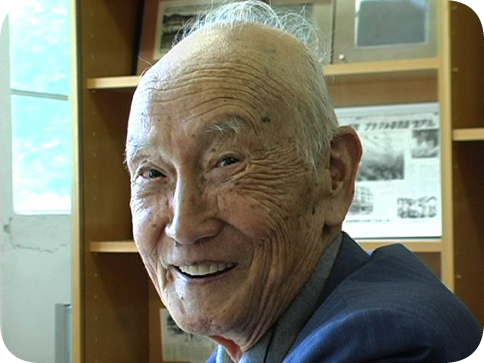|
Join Our List
|

|
|
|

|
LETTER FROM THE EDITOR
| |
My name is William Londo (though everyone calls me "Bill") and I assumed the editorship of the reviews section of the AEMS newsletter in June of this year. I am trained in history and consider the Department of History at Oakland University near Detroit my "home," but I also teach courses in East Asian religion at Michigan State University. My area of expertise is the history and religions of Japan, but a four year stint as Associate Director of the Michigan State University Asian Studies Center pushed me to learn more about other parts of Asia. I still have much to learn, however, and I will be relying heavily on the knowledge and experience of many experts on various parts of Asia to provide reviews for News and Reviews. I welcome your input on the newsletter and I am especially seeking reviewers and recommendations for media we might review. If you have seen a media presentation (film, website, etc.) that you believe should be more widely known, please contact me so that we may include a review of it in a future issue. We are willing to review any media, old or new, that might be useful in teaching about Asia and that we haven't already covered in our previous issues. I can be reached at londo@oakland.edu. For those who receive our newsletter in the Urbana Champaign area, please note that our AsiaLENS documentary and independent film series will present two screenings of A Grandpa From Brazil, reviewed in this issue. Opening the series on Tuesday, September 11 at 7pm at the Spurlock Museum, the film will conclude with an online discussion with the filmmaker. A full listing of screenings and links for more information follow the reviews in this issue. Finally, let me draw our readers' attention to two short video, both available on YouTube, that have been brought to the attention of AEMS by the Consulate General of South Korea in New York. One is "The Name: 'East Sea'" and the other is"The World Map is Changing: Korea's East Sea." Both give discussions of the name of the body of water between Japan, Korea, and Manchuria that is commonly designated on maps today as the Sea of Japan. These short pieces lay out the history of how it came to be called such and advocate changing the name to "The East Sea," which is how it is typically referred to in Korea. Educators teaching middle and high school geography, social studies, and history might find these useful in showing that the work of mapping is not as simple as it may seem, and in showing how geographic names can become a source of political controversy. Bill Londo
|
| FILM REVIEW | |
Making Mao
Directed by Galen Yeo. 2009. 52 minutes.
In English and Chinese with English Subtitles.
Reviewed by Shelley W. Chan.

The opening remarks of this documentary best summarize Mao Zedong's (1893-1976) influence in China, both before and after his death: "He was a man of many faces: revolutionary hero, a godlike figure to the people, and a pop icon to the world. Mao's image would control a nation for over half a century, and even in death, his presence lives on." Focusing on propaganda art, Making Mao reveals how art served the only one purpose, namely, the promotion of the Communist Party and its goals, in Mao's China, and how the image of Mao as the supreme leader was made in a half-century of revolution. The blind personality cult that resulted served to promote Mao as a god: in short, making Mao was the making of God in the Chinese context.
Art is powerful because it can change the way people think and live. The Chinese Communist Party (CCP) was certainly well aware of this. As a result, their propaganda effort is the largest in the world to date, and nowhere else is it as pervasive as in China, according to the film. The documentary shows how different art forms, including woodcuts, paintings, posters, music, opera, etc., were employed to serve the political purpose.
READ MORE...
|
| FILM REVIEW | | |
Die For Japan
Directed by Jeffrey Dyn. 2012. 17 minutes.
In English
Reviewed by Taylor Atkins.  Kamishibai (literally, "paper plays") are a form of entertainment unique to Japan, and therefore little known outside of that country. In cities and towns throughout interwar and postwar Japan, it was not uncommon to see a group of children clustered around a storyteller (usually male, but occasionally female) with a wooden box, about the size of a small television, lashed to a bicycle. The narrator would shuffle through a series of images visible through the box's backlit "screen," and read from text on the backs of these "slides." To keep it all lively, the narrator used a number of different voices, inflections, and sound effects-much like the puppet theater's gidayu and the benshi (silent film narrators) of earlier times-and kept his or her audience pumped up on cheap candies sold on the side. Although there likely were narrators who wrote, drew, and performed their own original kamishibai, most seem to have used professionally published materials. In kamishibai, then, we see the convergence of a number of indigenous theatrical, pictorial, and storytelling traditions with modern mass media technologies and marketing methods, providing a cheap alternative to the more sophisticated cinema. As an introduction to this medium, Jeffrey Dym's Die for Japan is very instructive. It provides many historical images and some contemporary film footage depicting both elder performers and young revivalists at work. Because it is both a visual and aural performance genre, kamishibai must be seen and heard to be understood, and Die for Japan has immense educational value for enabling us to do that. READ MORE...
|
| FILM REVIEW | |
A Grandpa From Brazil
Directed by Nanako Kurihara. 2008/2011. 58 minutes. In Japanese and Portuguese with English Subtitles
Reviewed by Cindi L. SturtzSreetharan.
 "Brazil is good for having fun; Japan is good for making money" states Mr. Narimatsu, one of 312,000 Brazilian Nikkeijin (immigrants of Japanese ancestry) living and working in Japan. He and his wife run an obento-ya (lunch box service) and restaurant that caters to Brazilians working in Shiga prefecture, Japan. Grandpa Konno elicits this insightful comment when he asks Mr. Narimatsu if he is able to save money in Japan. The film, A Grandpa from Brazil, holds many gems such as this one; the unusual (and perhaps accidental) ethnographer is 92-year old Ken'ichi Konno, a Japanese émigré to Brazil in 1931. He steadfastly returns to Japan for about a month each year to "get some distance from Brazil, to understand what's going on there and to see how Japan is doing." The film follows one of his trips back to Japan to check on Brazilian workers and their families, make connections with Nikkeijin related non-profit organizations, and visit public sites (such as museums) which are of importance to past and current emigrants and immigrants. One of the main strengths of this film is the way the camera captures the empathy and caring that Grandpa Konno extends to the people with whom he interacts. READ MORE...
|
| AsiaLENS FILM SERIES | |
 AsiaLENS AsiaLENS is a series of free public film screenings and lecture / discussion programs -- organized by AEMS in collaboration with the Spurlock Museum -- presenting recent documentary and independent films on issues reflecting contemporary life in Asia. Local and visiting experts introduce the films and lead audiences in post-screening discussions.
All AsiaLENS screenings are FREE and open to the public. A Grandpa From Brazil Tuesday, September 11, 2012 - 7:00 pm Spurlock Museum, 600 S. Gregory Street, Urbana, IL Encore Screening: Thursday, September 20, 2012 - 7:00 pm Urbana Free Library, 210 W. Green Street, Urbana, IL When China Met Africa Tuesday, October 9, 2012 - 7:00 pm Spurlock Museum, 600 S. Gregory Street, Urbana, IL Encore Screening: Thursday, October 25, 2012 - 7:00 pm Urbana Free Library, 210 W. Green Street, Urbana, IL Pinoy Sunday Tuesday, November 13, 2012 - 7:00 pm Spurlock Museum, 600 S. Gregory Street, Urbana, IL Encore Screening: Sunday, November 18, 2012 - 3:00 pm Champaign Public Library, 200 W. Green Street, Champaign IL CLICK HERE FOR MORE INFO
|
| WEBSITE: DIGITAL ASIA | |  Digitial Asia, a website bringing documentary films on contemporary East Asia to the classroom, has been launched by the Asian Educational Media Service (AEMS). In providing free access to excerpts of scholar made films on Asia, along with downloadable curriculum materials, Digital Asia offers high school and college educators an easy way to incorporate today's issues in Asia as part of their lesson plans. Digital Asia can be found at: www.digitalasia.illinois.edu Digital Asia is funded by the Freeman Foundation of Stowe, VT., New York City and Honolulu and by the IL/IN East Asia National Resource Center funded by U.S. Department of Education Title VI. |
|
| SUPPORT AEMS | | AEMS invites our supporters to make targeted donations to enhance our holdings and public programs. A donation of $30 can be used to purchase a film for the AEMS library. $300 will sponsor an AsiaLENS screening on campus or in the Champaign-Urbana community. $500 will help underwrite a film and curriculum materials in Digital Asia. Donations for specific materials or events will be acknowledged both in News and Reviews and at sponsored events. Thank you for your ongoing support of AEMS.
Follow this link to make an online donation.
PLEASE NOTE:
You will be directed to the CEAPS Giving page.
After clicking "Continue With Your Donation" you will find a Special Instructions section where you can highlight "yes" under the question "Do you have other instructions for processing your gift?"
A text box will open where you can direct your gift to the following:
AEMS - Asian Educational Media Service Fund -or- Digital Asia Fund
|
NEWS AND REVIEWS
| | Previous issues of News and Reviews:
Electronic newsletters - September 2010 - Spring 2012
Archived print newsletters - Spring 1998 - Fall 2009
|
| ABOUT AEMS | | Media Production Group
In addition to hosting film screenings, AEMS also produces and distributes its own materials under the brand name Media Production Group (MPG) . These are short educational videos and DVDs about an aspect of Asian culture suitable for classroom use and accompanied by curriculum.
Database
AEMS maintains a searchable database of over 6,000 films about Asia, including length, format, distributor and synopsis. search the database
Library
AEMS library, through its connection to the Lincoln Trails library system, circulates videos and DVDs locally from its collection of more than 2,000. |
|
Asian Educational Media Service | 805 W Pennsylvania Ave | Urbana | IL | 61801
|
|